Getting used to a prosthetic limb is not just about wearing it—it’s about building your body’s strength and trust in it. One of the biggest steps after amputation is improving something called weight-bearing tolerance. In simple terms, it means helping your body get comfortable with putting weight on your prosthetic limb—whether it’s standing, walking, or moving throughout the day.
Right after amputation, your body goes through major changes. Muscles shrink. Joints feel tight. The remaining limb, often called the residual limb, may be sore or sensitive. All of this makes putting weight on your prosthesis feel unnatural or even painful at first. But the more your body practices and adapts, the easier it becomes.
That’s where the right exercises come in.
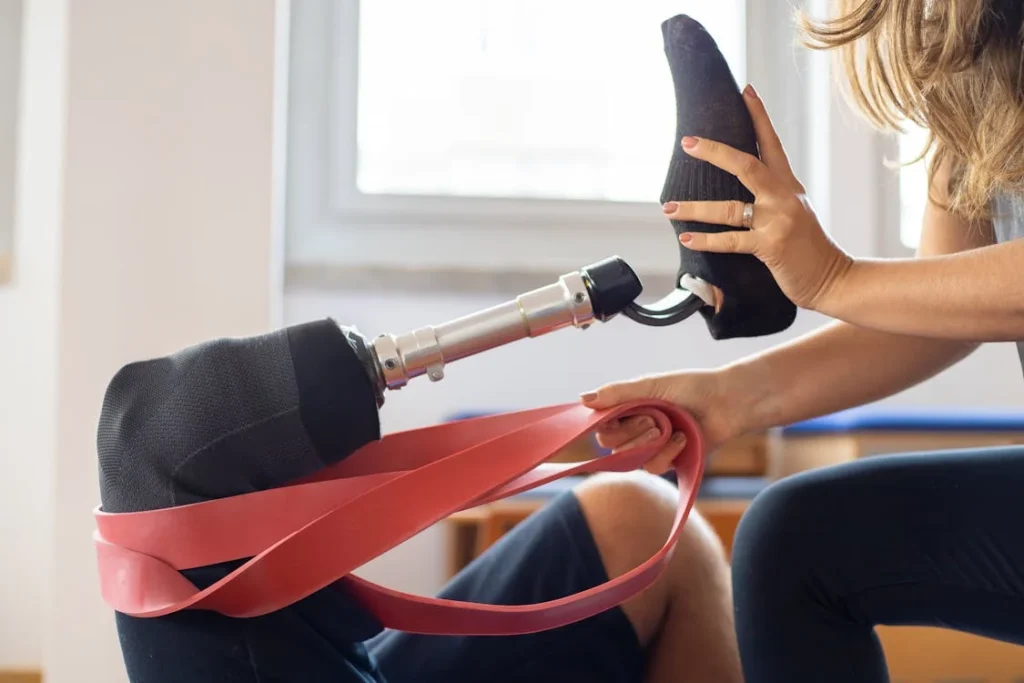
Preparing the Body for Weight-Bearing After Amputation
Understanding the Body’s Response to Change
After an amputation, your body doesn’t just lose a limb—it goes through a major shift. The muscles, bones, and joints that once shared the load must now figure out a new way to keep you upright and balanced.
This change takes time and patience. The body needs to relearn how to trust the new limb, especially when it comes to standing or walking on it.
Many people notice that when they first try to stand with their prosthesis, they instinctively avoid putting full weight on it. This is natural.
The body is trying to protect itself from pain or discomfort. But over time, avoiding weight-bearing can actually make things worse.
Muscles become weaker, joints grow stiffer, and balance gets harder. That’s why early and steady movement, even small steps, is so important.
Building a Foundation With Gentle Activation
Before jumping into full weight-bearing, the first step is to wake up the muscles around the residual limb.
These muscles may have been inactive for a while after surgery. By gently activating them, you remind your body how to move and prepare it for more demanding work later.
Simple movements like tightening your thigh or glute muscles while sitting or lying down can make a big difference.
These small efforts help keep muscles from shrinking and begin the process of building strength.
Another important early step is learning to shift your weight side to side while holding onto a stable surface.
At first, the shift may be tiny—just enough to feel the pressure move from one leg to the other. This helps the brain reconnect with the feeling of standing on two limbs, even if one is a prosthesis.
Strengthening the Core for Better Control
Your core—meaning the muscles in your abdomen, lower back, and hips—is what keeps you steady.
After an amputation, these muscles take on even more responsibility because they help you stay balanced.
A strong core gives you better control over your prosthesis and helps prevent falls or uneven walking.
Core training doesn’t need to be complicated. Just sitting up straight, holding your balance without leaning, or trying to raise your knee gently while keeping your back straight—all of these activate your core.
Over time, these movements add up and make standing and walking more secure.
Many new prosthetic users don’t realize how much their balance depends on their middle—not just their legs. By focusing on this area early, you build a base that makes everything else easier down the road.
Regaining Trust in the Residual Limb
Emotion plays a huge role in physical recovery. After an amputation, it’s common to feel unsure about putting pressure on the remaining limb, especially if there was pain, swelling, or sensitivity during healing.
Some people even feel fear—what if it hurts? What if I fall? These questions are normal.
The best way to regain trust is through gradual exposure. Using soft padding, mirror therapy, or even gentle tapping helps reduce sensitivity. Wearing a shrinker or liner prepares the skin and tissues for more pressure later. Over time, the limb becomes less tender and more ready for movement.
When you start standing, even if only for a few seconds at a time, your brain starts rebuilding its trust. It begins to learn, “I can stand. I can balance. I can move.” These small moments lead to bigger milestones later on.
The Role of a Supportive Environment
Having a safe, supportive space for movement is essential. Whether you’re at home, in a clinic, or working with a rehab team, the goal is to remove fear and make movement feel achievable.
Using parallel bars, sturdy furniture, or a walker helps reduce the risk of falling while you build strength.
It’s also helpful to have someone who can guide and encourage you, especially in the early days. A trained therapist, family member, or prosthetist can watch your movements, offer support, and help you adjust when something feels off.
Most importantly, progress should always be at your own pace. There’s no deadline. Some people feel comfortable bearing weight after a few weeks, others need a few months. What matters is steady, honest effort—not speed.
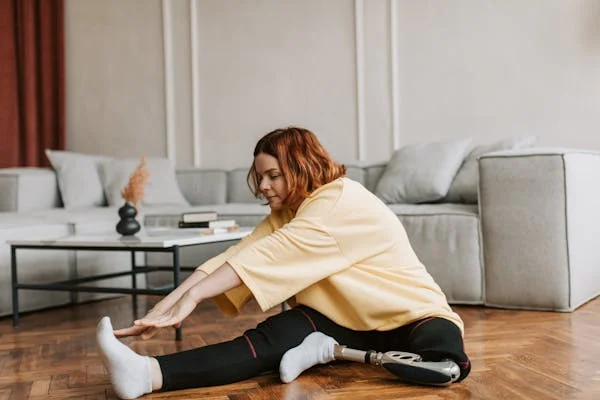
Starting Safe Weight-Bearing Movements
Standing Still With Support
The first active goal after basic recovery is often just standing still. It might sound simple, but for an amputee, it’s a big moment.
When you stand with your prosthesis for the first time, you’re asking your body to do something it hasn’t done in a while—trust both sides equally.
Begin by using something steady to hold onto, like parallel bars or a countertop. Place your feet flat and stand upright.
At first, most of your weight may stay on the sound limb. That’s okay. The idea is to slowly shift more and more weight onto the prosthetic side, a little at a time.
This process tells your brain and body that the prosthesis is safe and strong enough to support you. It’s less about strength and more about confidence.
Over time, as the weight shift becomes more balanced, your muscles start adapting. You begin activating small stabilizing muscles that are often ignored but deeply important to good posture and pain-free movement.
You may feel soreness, especially in the back or hips, after your early standing sessions. This is normal. It’s your body adjusting.
But if you feel sharp pain or discomfort in the socket or joints, that’s a signal to check in with your prosthetist for small alignment tweaks.
Controlled Weight Shifting
Once you’re comfortable standing still, the next step is learning how to shift your weight smoothly from one leg to the other. This helps your muscles learn how to balance pressure, stay aligned, and respond to movement.
While holding onto support, gently move your body weight to your prosthetic side, hold it for a few seconds, and then return to center.
The movement should be slow and steady. It’s not about speed—it’s about control. Each time you shift your weight, your body is learning trust, timing, and balance.
With practice, this starts to feel less scary. You’ll notice you’re not gripping the support as tightly. You might even begin to move without holding on at all.
These shifts prepare you for more natural walking by teaching your hips and spine how to stay upright without overcompensating.
It’s okay to feel nervous. But remember, you’re building a new way of moving. It’s like learning to ride a bike again—but with more patience and care.
Gentle Marching and Step-Touch Motions
As your confidence grows, so does your body’s readiness for more dynamic movements. One helpful progression is gentle marching in place.
Start by lifting your sound leg slowly, just a few centimeters off the ground, then place it back down. Then try the same on the prosthetic side. If needed, keep both hands on a support surface.
You may not lift the prosthetic side as easily in the beginning, and that’s okay. What matters is trying to keep your body straight and stable.
The goal here is to activate the hip flexors and teach your core to stay centered while moving one leg at a time.
Once that feels good, try a step-touch movement. Step your sound leg slightly to the side, then bring the prosthetic foot to meet it.
Do the same in reverse. These lateral movements help engage muscles around your hips and pelvis that are key to walking confidently and avoiding back or hip strain.
These exercises may feel tiring, even if they seem small. That’s because your stabilizing muscles are doing the hard work of keeping you upright and balanced. With each session, you build more control and more endurance.
Using Mirrors and Feedback for Progress
One powerful tool that many people overlook is the mirror. Watching yourself during these movements gives you instant feedback. You can see if you’re leaning, twisting, or avoiding full contact with the prosthesis.
Standing in front of a mirror helps correct small habits that might lead to pain later.
You might notice that you always shift away from the prosthetic side or that your shoulders tilt. These visual cues make it easier to correct your form and create better habits.
Some clinics, including ours, use visual feedback tools or motion tracking. But even at home, a full-length mirror or a smartphone camera can help you spot patterns and track your improvement.
You’ll start seeing how much more evenly you’re standing, how your body reacts with each movement, and where you still need support.
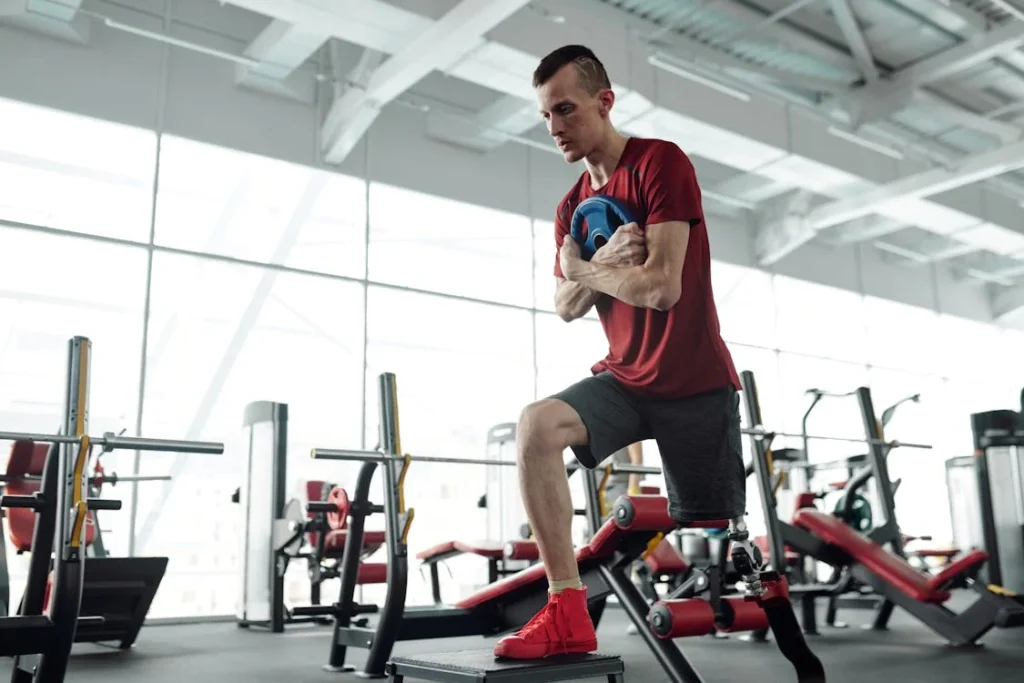
Strengthening Muscles That Support Weight-Bearing
Activating the Hip and Glute Muscles
The hips and glutes are like the engine of your lower body. They control balance, posture, and most of your walking power.
After amputation, especially if you’ve been less active, these muscles can become weak. When they’re weak, your pelvis shifts too much, your lower back gets overworked, and your walking feels unstable.
To begin building these muscles, focus on slow, steady movements that don’t require special equipment. One simple activity is standing tall and gently squeezing your glute muscles while holding a stable surface.
This helps “wake up” those muscles. You can also try stepping slightly backward with the prosthetic leg and holding the position for a few seconds. This movement teaches your glutes to activate as you shift weight.
Each time you work these muscles, you teach your body to stay balanced, absorb impact better, and reduce the pressure on your joints. You’re also preparing your body to take longer, more natural steps in the future.
Improving Balance Through Stability Work
Balance is a skill, not just a strength issue. It’s a coordination between your muscles, joints, and brain.
When you improve your balance, your weight-bearing tolerance goes up automatically. That’s because your body starts to feel safer when standing on two legs.
Start with basic activities like standing on your prosthesis while gently touching a surface with one hand. If you feel wobbly, keep your grip.
As you feel more secure, try to reduce how much pressure you place on your support hand. Over time, you’ll notice that your body starts correcting itself without needing to lean.
Another helpful movement is to stand with your feet hip-width apart and slowly look left and right with your head, or even close your eyes for a few seconds.
This challenges your balance in new ways and forces your body to rely more on muscle memory and core strength. The more you practice, the less your body feels the need to “protect” the prosthetic side.
These are small exercises, but they add up. With repetition, your body stops seeing the prosthesis as a weak point and starts using it as a natural part of movement.
Engaging the Core With Gentle Motion
We’ve talked about the core before, but it’s worth coming back to. Strong abdominal and lower back muscles are critical to maintaining posture while standing or walking.
Without them, you end up shifting too much weight side to side, which leads to strain—especially in the hips and spine.
One easy way to build core strength is seated posture work. Sit at the edge of a firm chair with your feet flat and back straight.
Without leaning, try lifting one foot just slightly off the ground while keeping your balance. This forces your core to engage.
Even deep breathing exercises can help. Sit upright and breathe slowly, focusing on your belly rising and falling.
This improves awareness of your middle and reminds your body how to support itself without relying too much on the arms or legs.
You don’t need to do crunches or planks to build your core. What matters is training your body to stay upright and balanced during daily activities.
That’s what helps you tolerate weight on both legs, without overworking one side.
Standing-to-Sitting Control
Another key movement is practicing how to sit down and stand up properly.
Many amputees find this challenging at first because their weight shifts forward or to one side. But learning how to control this motion safely builds leg strength, trust, and coordination.
Start with a chair that’s not too low. As you begin to sit, focus on keeping your chest upright and your weight balanced between both legs.
Lower yourself slowly instead of dropping down. When standing back up, press through both feet equally and try to rise with a steady motion.
This kind of training improves how your body shares load between the sound limb and the prosthetic side. It also reduces the risk of falls and helps you build the strength needed for daily independence.
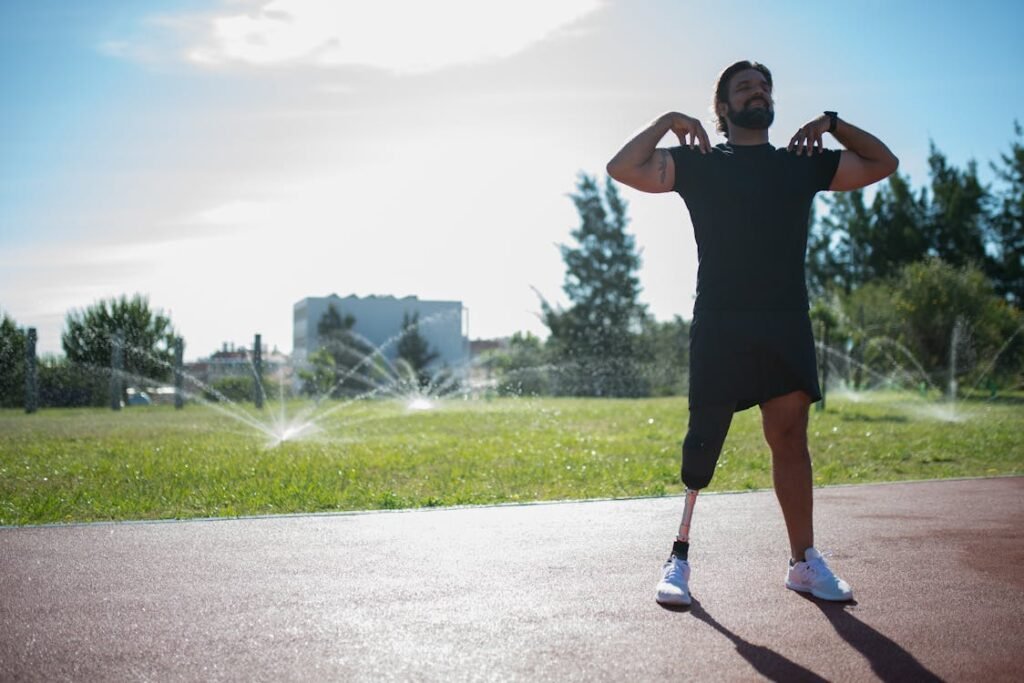
Building Endurance and Confidence With Repetitive Motion
The Value of Repeating Simple Movements
In the early stages of rehabilitation, it’s not about doing a lot—it’s about doing a little well. When you repeat a simple movement over and over with good form, your body learns how to trust that movement. It becomes more automatic and less tiring. That’s where endurance starts.
Let’s say you’re practicing weight shifting side to side. Doing that motion twenty times a day—even if it’s just for a few seconds each time—can train your muscles, joints, and nerves to work together.
The more you repeat it, the more your body gets used to standing on both legs, especially the prosthetic one.
The same goes for standing up and sitting down, stepping forward, or even marching in place. These aren’t fancy exercises, but they help your body build rhythm.
Repetition trains your muscles to respond faster and your brain to feel safe during movement.
Consistency is more important than intensity. You don’t need to feel exhausted at the end of a session. You just need to feel like you moved with control and focus. This is what allows you to stand longer, walk farther, and feel less pain as your day goes on.
Using Walking as a Natural Exercise
Walking is one of the best weight-bearing exercises, but it must be approached gently and mindfully—especially in the beginning.
Walking too far or too fast too soon can lead to pain, fatigue, and poor alignment. But short, frequent walks give your body the time it needs to adjust and get stronger.
Start with just a few steps. Focus on stepping evenly with both legs. Think about your posture—keep your shoulders relaxed and your spine tall.
If you find yourself leaning or limping, slow down and try to correct it before taking more steps.
Walking on smooth, flat surfaces is best early on. As you feel more confident, you can start to add variety—slightly uneven floors, gentle slopes, or even walking in place while watching TV.
Each of these changes helps your muscles adjust to different weight demands, which builds both endurance and stability.
If pain starts to appear during walking, especially in the lower back or hips, it’s important to stop and assess.
This could mean you’re placing too much weight on one side, or your alignment might need to be checked. Addressing small issues early helps prevent long-term discomfort.
Practicing Transitions Between Movements
Being able to move from one position to another—like going from sitting to standing, or turning while walking—is part of real-world movement.
These transitions are often where people feel most unsure. Practicing them regularly builds the confidence to move naturally again.
Try this: stand near a stable surface and take one small step forward with your sound leg. Then shift your weight gently onto your prosthetic and step the other leg forward to match. This mimics the walking motion and helps your body relearn the shift in weight.
Turning is also worth practicing. Start by turning slowly in a small circle. Don’t rush. Focus on keeping your hips and shoulders aligned.
Many falls happen during quick turns, especially if the prosthetic side feels weak. Practicing controlled turns builds coordination and teaches your brain how to react.
Each time you move from one position to another with confidence, your weight-bearing tolerance improves.
You’re not just getting stronger—you’re becoming more in tune with how your body responds to each motion.
Emotional Strength and Physical Endurance Go Together
As you build physical strength, you also build emotional resilience. The act of standing up for longer, walking more steps, or balancing without help sends a powerful message to your brain: “I can do this.”
That mindset fuels motivation. It encourages consistency. And it reminds you that progress doesn’t have to be fast to be real.
Confidence is a quiet strength. It comes from showing up every day, doing the work, and noticing the small wins—like standing a little longer or walking a little straighter.
These moments matter. They tell you that your body is learning and adapting, and that’s how lasting endurance is built.
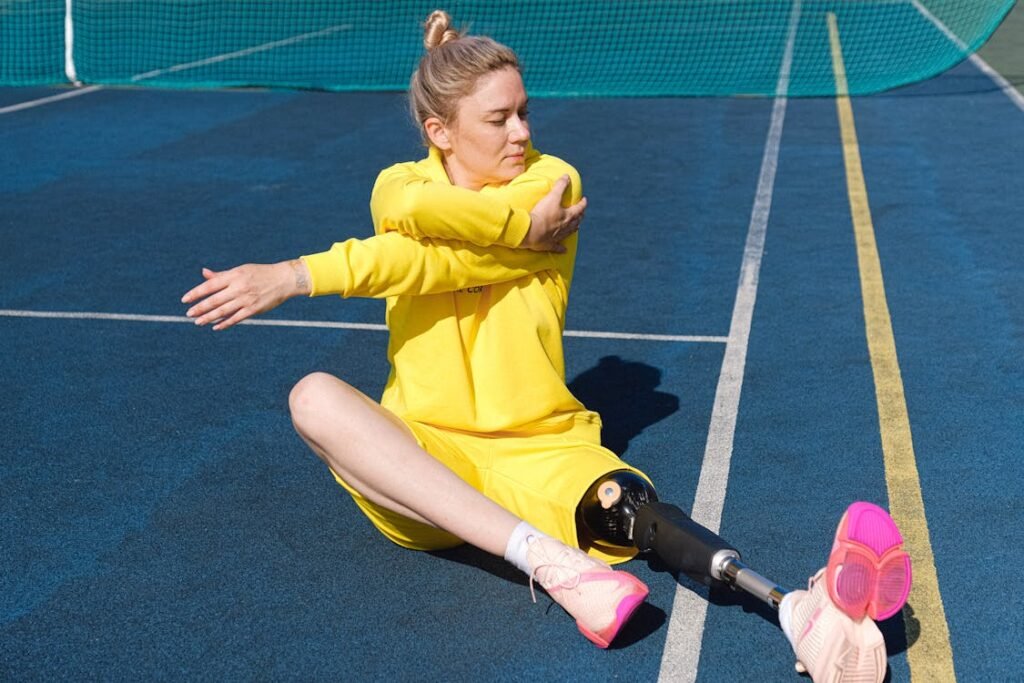
Integrating Exercises Into Everyday Life
Turning Daily Activities Into Rehab Moments
Formal exercises are important, but much of your progress will come from how you move during everyday life. Weight-bearing tolerance improves most when the body gets regular reminders that movement is safe and natural.
That’s why small moments—like standing in the kitchen or shifting your weight while brushing your teeth—can be powerful tools for recovery.
Start by thinking about your daily routines. When you’re getting dressed, can you stand for a few extra seconds without sitting down right away? When waiting for the kettle to boil, can you practice standing evenly on both feet? These moments are short, but they offer real opportunities to reinforce strength, balance, and confidence.
Even walking inside the house—say, from one room to another—is a chance to practice posture, weight shift, and controlled steps. Y
ou don’t need a gym or a big space. Your own environment can become a training ground if you move with purpose.
This mindset shift—seeing daily movement as part of your recovery—helps you stay consistent without feeling overwhelmed. It also makes progress feel less like a task and more like a lifestyle.
Listening to Your Body Without Fear
As you become more active, it’s important to pay attention to what your body is telling you.
Some discomfort is normal, especially in muscles that haven’t worked in a while. But sharp or sudden pain is a warning sign that something isn’t right.
The goal is not to push through pain. The goal is to work within your current limits while slowly expanding them.
If you notice discomfort in your lower back, hip, or knee after activity, it could mean you’re putting more weight on one side or compensating in a way that strains your joints. That’s not a failure—it’s information.
Use that feedback to adjust your form, slow down, or speak with your prosthetist or therapist. Alignment tweaks or slight changes to your routine can often fix the issue before it grows.
There’s no prize for going the fastest. Sustainable progress comes from being kind to your body while still challenging it.
Reaching Out for Help When Needed
Sometimes, even with consistent effort, it can feel like progress has slowed or pain is getting in the way.
This is the right time to reach out—not because you’ve done something wrong, but because prosthetic care is a team effort.
At Robobionics, we always encourage our users to stay in touch with our care team. Whether it’s an alignment check, a socket adjustment, or a new rehab routine, we’re here to support every step of the journey.
No concern is too small. If something feels off, it probably is—and we can help make it right.
We also believe that support doesn’t stop after the initial fitting. That’s why we offer ongoing guidance, personalized rehab plans, and even gamified home programs that make building weight-bearing strength fun and effective.
You don’t have to figure it all out on your own. Real support means being heard, understood, and helped—quickly.
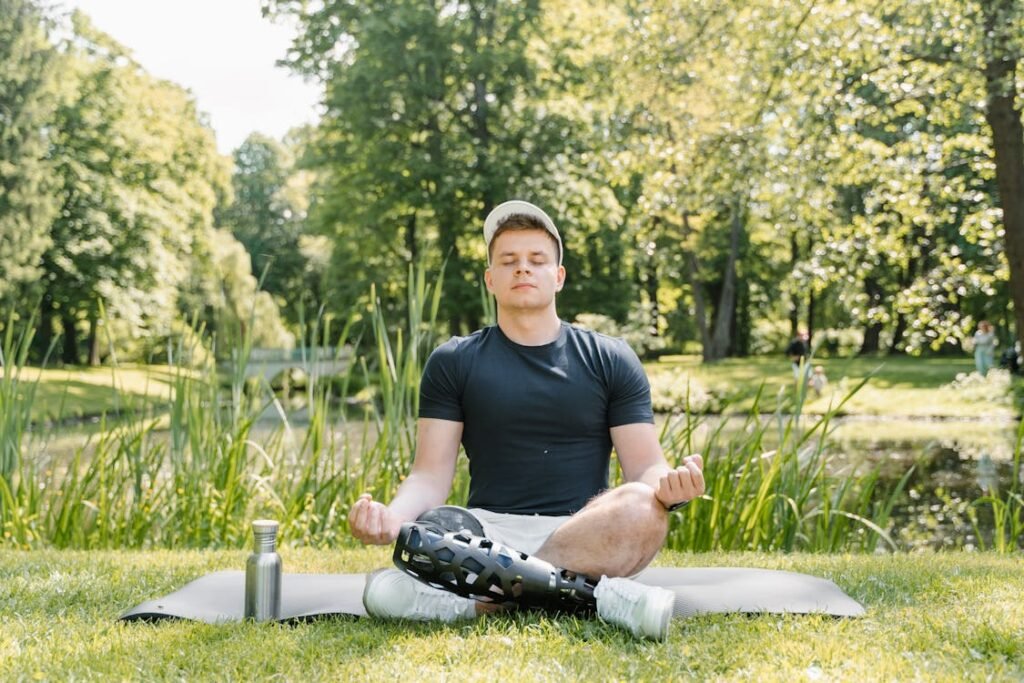
Conclusion
Improving weight-bearing tolerance after amputation isn’t about pushing harder—it’s about moving smarter. Your body is learning to trust itself again, and that takes time, repetition, and care. Whether you’re just beginning your journey with a prosthesis or rebuilding strength after years of use, the path forward is always open.
Every small movement matters. Every step you take, even in your living room, builds strength. With consistent practice, smart guidance, and the right support, your body adapts. Pain fades. Balance improves. Confidence returns.
At Robobionics, we’re committed to helping you get there—not just with high-quality prosthetics, but with real human support, home-based rehab tools, and a clear focus on your comfort and long-term success.
If you’re ready to begin or need help with your current progress, reach out to us today. Let’s talk about how we can help you build strength, improve alignment, and move forward—confidently and pain-free.



